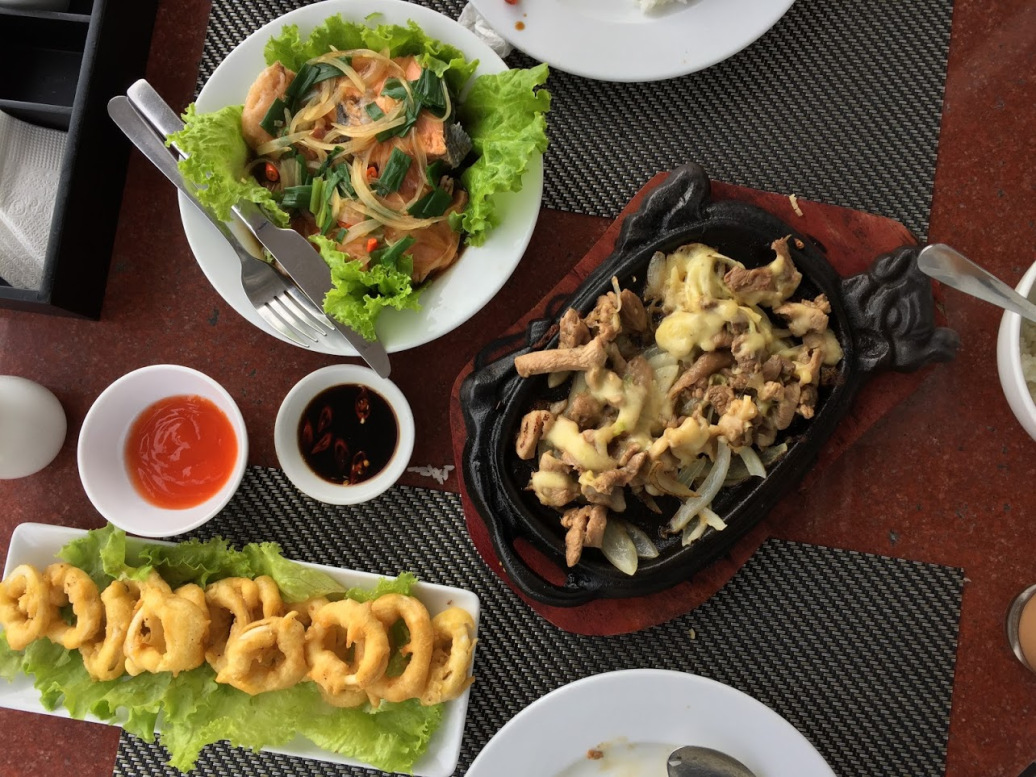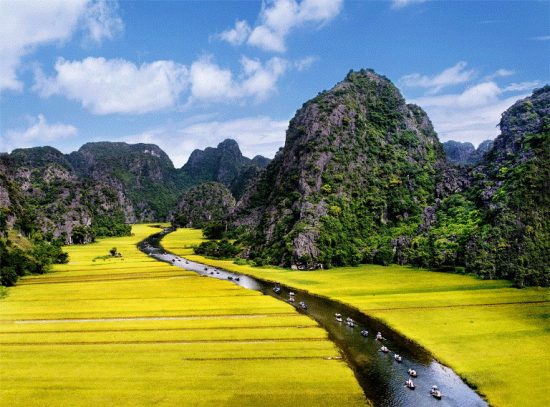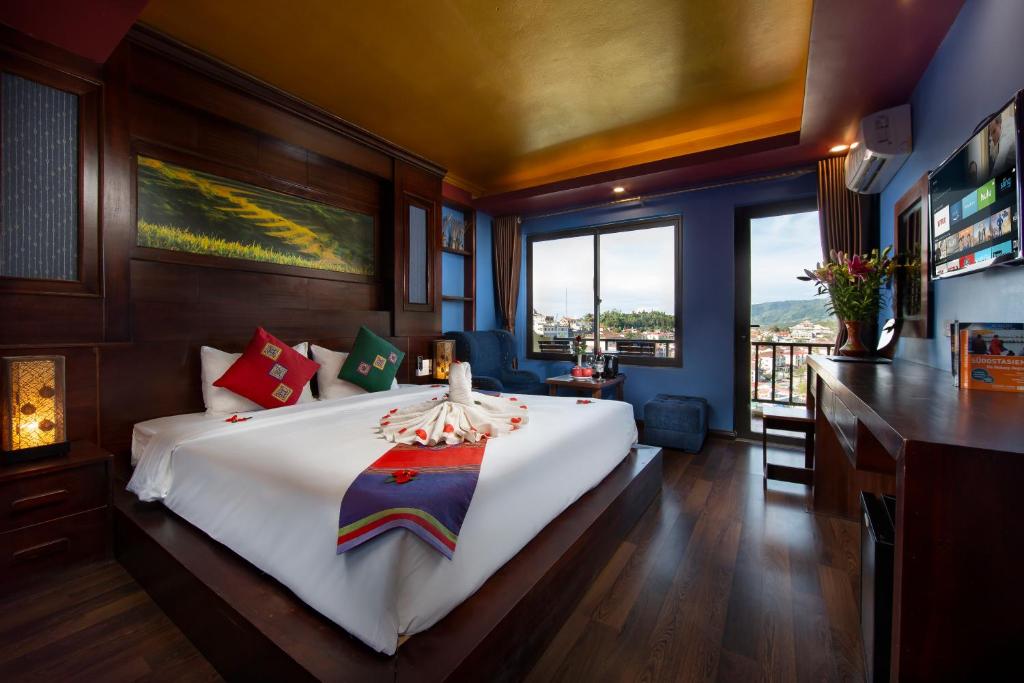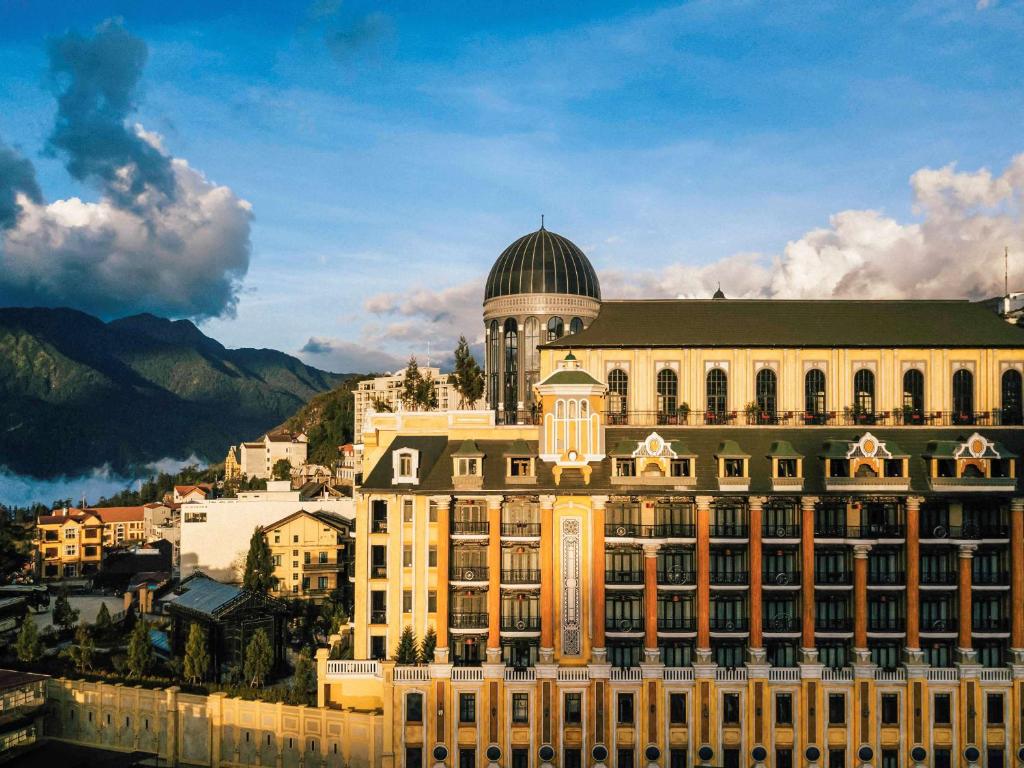A photographer's journey to Sa Pa's cherry blossoms
Traveling along Highway 4C to Sa Pa Town in the northern highlands, visitors are greeted by rows of cherry blossom trees standing out against the green tea hills.
View moreGolden season in Sapa
In mid-August, the terraced fields in Muong Hoa were dyed in picturesque yellow, but there were no tourists.
View moreSapa Vietnam Halal Food – Everything You Need to Know
Sapa is one of the major tourist attractions in the north of Vietnam. Visiting Sapa, it means you are going on the journey to explore the wonderlands or simply wandering around the mysterious and far away villages of this beautiful town. After a couple of hours trekking and discovering mountainous area, it would be wonderful to fill up your tummy with delicious Sapa Vietnam halal food.
View moreExplore Sapa
Sapa is the "meeting place between heaven and earth" with the most majestic natural scenery in the North. This is also the convergence of ethnic minorities living for many generations. Sapa's climate is cool all year round with unique indigenous imprints - most notably the culture of two major ethnic minorities in Sa Pa, the Mong and the Dao - combined with the European architectural space. Classic Europe. All of the above factors have created a special attraction for tourists who want to explore this land.

Sapa Tour
Attractive Sapa tourist attractions: Fansipan Peak - the roof of Indochina, Ham Rong Mountain, Love Waterfall, Stone Church - Sapa tourist attractions attractive to tourists, O Quy Ho Pass, Ta Phin - the village of the people Red knife, Sapa ancient stone beach, Lao Chai - Ta Van, Cat Cat village,...
Hotel
Sapa has a variety of accommodation options for you to choose from, from motels, homestays in villages, hostels, cheap hotels, to 4-5 star hotels, isolated luxury resorts. Resorts in Sapa have notable places such as Topas Ecolodge, Sapa Jade Hill, Hôtel de la Coupole - MGallery, Silk Path Grand..
If you choose a homestay or hostel, go to villages like Cat Cat, Lao Chai, and Ta Van to enjoy the peaceful space of the Northwest mountains. Dorm room price from 100,000 VND per person, bungalow double room price from 500,000 VND.
Saparis Hotel
Sapa
Hotel de la Coupole - MGallery
Sapa
Weather
Sapa has a cool climate, so it is suitable for year-round travel. You just need to avoid the stormy season from June to early August, because extreme weather can cause floods, flash floods, landslides...
From February to May, Sapa spring is brilliant with hundreds of blooming flowers such as cherry apricots, peaches, plums... Summer from June to August is the time when tourists come to Sapa to escape the heat. See the green terraced fields.
Autumn lasts from September to November, Sapa is charming in the golden color of ripe rice and it gradually turns cold. Winter comes from December to February next year, if you're lucky you can "hunt" snow and ice on the tops of the mountains.





